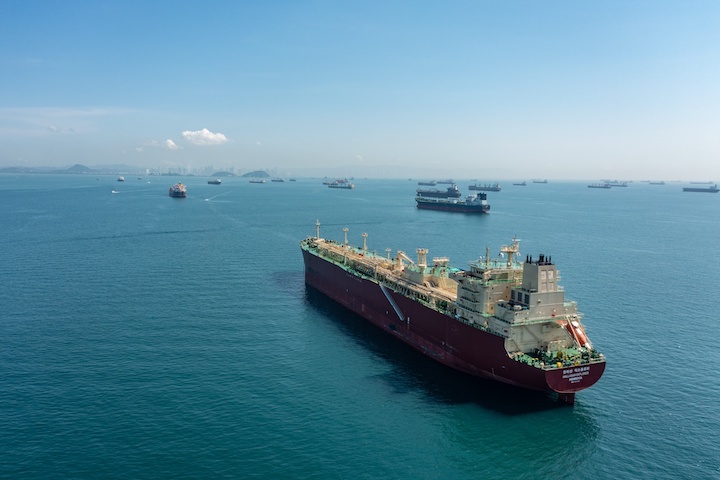
An escalation in drone and missile strikes on maritime shipping passing through the Bab al-Mandab Strait at the southern mouth of the Red Sea has heralded fresh period of uncertainty for global supply chains and left shippers on the Asia-to-Europe trade lane and to lesser extent on the Asia-U.S. east coast facing the possibility of sharp increases in ocean freight rates as several leading box carriers re-route vessels around the Cape of Good Hope to avoid the Suez Canal.
Depending on how long the disruption lasts, there could be a knock-on effect on air cargo too as exporters and importers fear significant transit delays and turn to planes to get goods to market.
The U.S. is leading a naval task force to counter them.
Force Majeure For Transits
Major shipping companies have declared force majeure, suspending transit through the Red Sea due to safety concerns. The ONE alliance has announced an emergency peak season surcharge for all container types on the Asia-Europe trade from January 1st, of $500 per teu – an indication that the situation will not be resolved any time soon, even with the presence of naval escorts.
The Red Sea attacks come on top of the upheaval caused by decreased water levels in the Panama Canal which has led to the local authorities imposing a limit on the number of daily vessel passages. Carriers’ response has been to implement surcharges and rate increases.
Approximately 15% of world shipping traffic – comprising oil and liquefied natural gas shipments, as well as consumer goods – is said to transit via the Suez Canal, the shortest shipping route between Europe and Asia.
Just how vital it is in facilitating world trade was ably demonstrated in 2021 when Evergreen’s box ship, the Ever Given ran aground in the waterway blocking the passage of hundreds of ships for six days.
Mounting fears of disruption to supply chains from the attacks, has led BP to introduce a temporary suspension of all shipments of oil through the Red Sea. This could result in oil price hikes, especially if disruption is prolonged and its peers follow suit.
Suspending services through the Red Sea and re-routing ships around Africa obviously amounts to a costly alternative for shipping lines – one analyst has estimated increased fuel and transit costs at around $2 million per ship.
Diversion Adds 4,000 NM To Voyage
The diversion will add around 4,000 nautical miles to each vessel’s voyage – the equivalent of 10 days more at sea. This would extend the Shanghai to Rotterdam route to around 37 days.
Asia-US east coast services will see journeys lengthened by around seven days.
There is also the prospect of steep rises in war-risk insurance, with the extra costs being passed on to shippers.
The London marine insurance market has extended the area in the Red Sea deemed high risk, adding to premiums ships pay.
According to Peter Sand, chief analyst at benchmarking and market analytics platform, Xeneta, “depending on the scale and duration (of the Red Sea attacks), we could see ocean freight prices increase by up to 100 %.”
Recent data from the Shanghai Containerized Freight Index (SCFI) shows that spot rates on the major Asia-Europe and Asia-Mediterranean lanes have on average already risen by well over 30% in the past few weeks, the increases driven largely by a build-up in cargo ahead of China’s Lunar New Year which in 2024 falls on 10 February.
While freight rates would be expected to rise further due to the longer journeys around the Cape of Good Hope, it seems unlikely they will surge to the kind of levels seen during the pandemic given that excess capacity is a current feature of the market, carriers having announced blank sailing programs for the coming months.
The disruption to ocean shipping schedules caused by the missile attacks could lead to more demand for air freight, especially if the Houthis action is prolonged. This would add to current pressures on capacity and create a further upward movement in rates.
Global load factors remained as low as c. 60% for most of 2023 but have risen considerably during Q4, particularly in December. This has resulted in a somewhat unexpected peak season for ex-China/Asia volumes which, combined with a serious squeeze in available capacity, has driven up rates – the consequence of a spurt in e-commerce shipments which one analyst described as “an amazing development” and that could be sustained all the way up to the Lunar New Year.
If air freight carriers are called upon to provide an alternative to ocean passage their room for maneuver could be quite limited if these ex-China/Asia market conditions are maintained. The air charter market will be anticipating a possible modal shift in shipments with combined sea-air service providers also well-placed to accommodate a surge in demand.
How long the Houthi attacks on merchant shipping will be determined by the effectiveness of the action taken by the U.S.-led naval task force. Skepticism has already been expressed as to the capability and scope of such a coalition.
What the crisis has brought into sharp relief once again is how geopolitical tensions can disrupt global supply chains and the importance for shippers to build and implement risk management capabilities to improve response and resiliency in the light of such exceptional events.
The latest episode could lead more companies to consider near-shoring to mitigate these risks.

